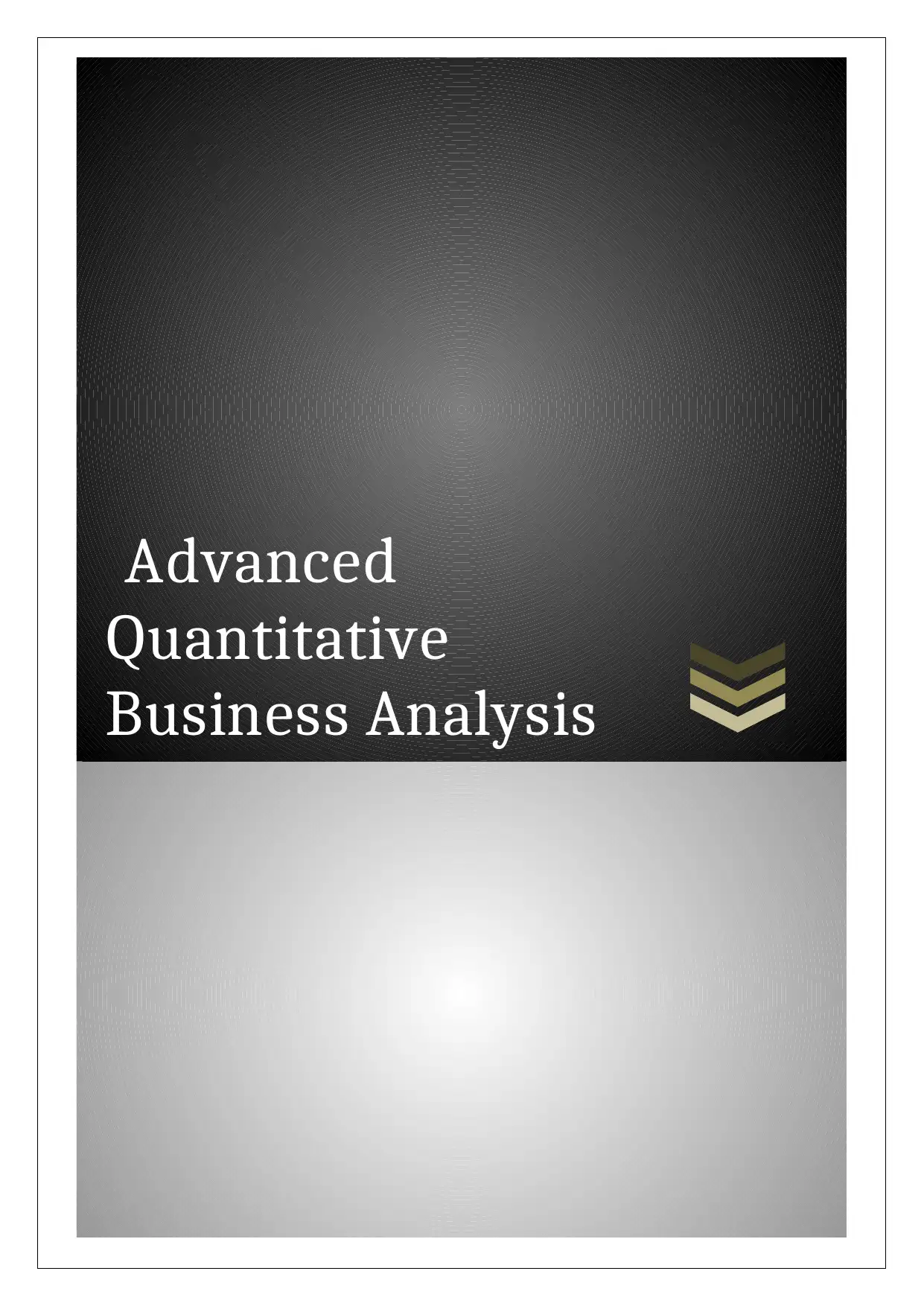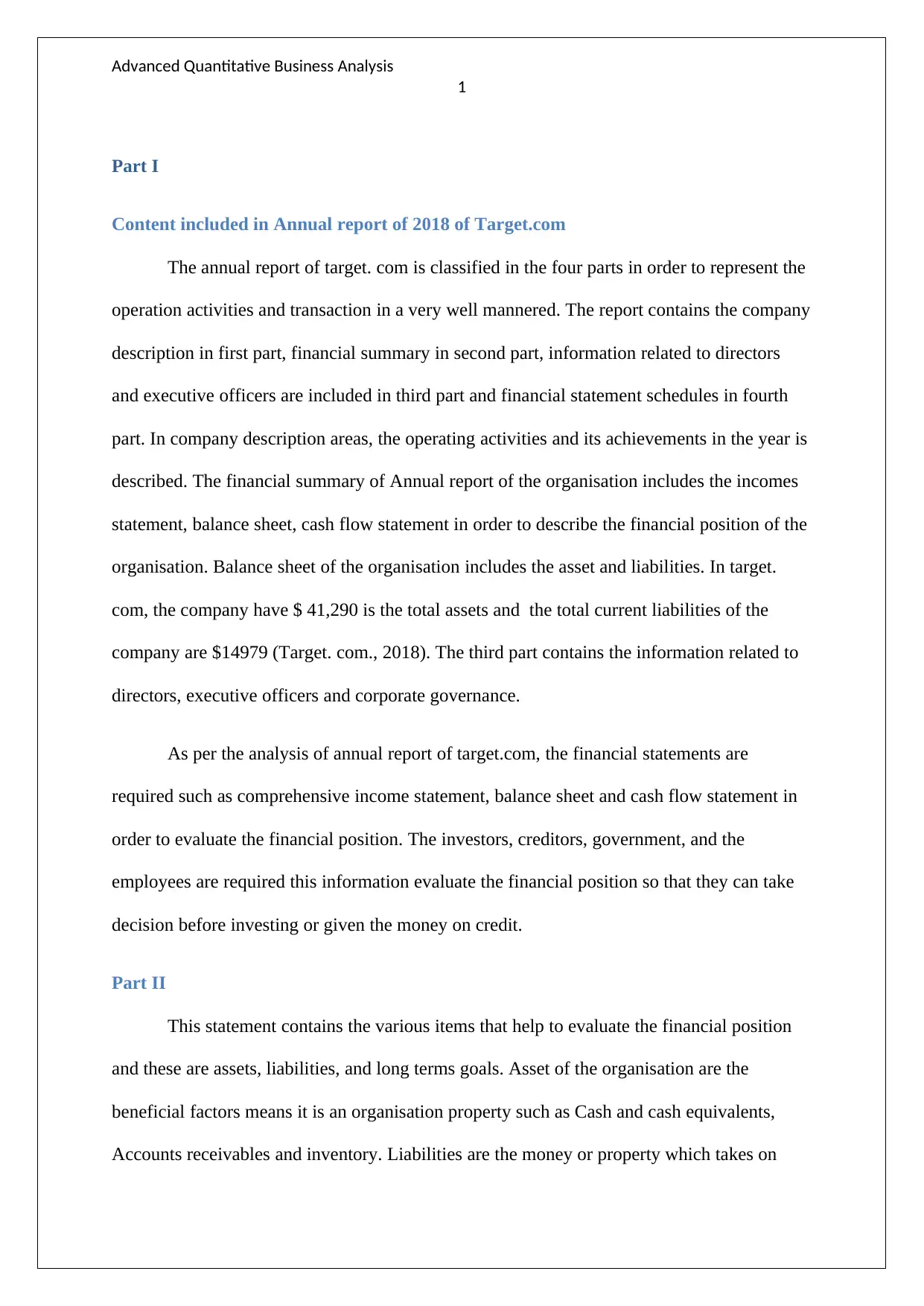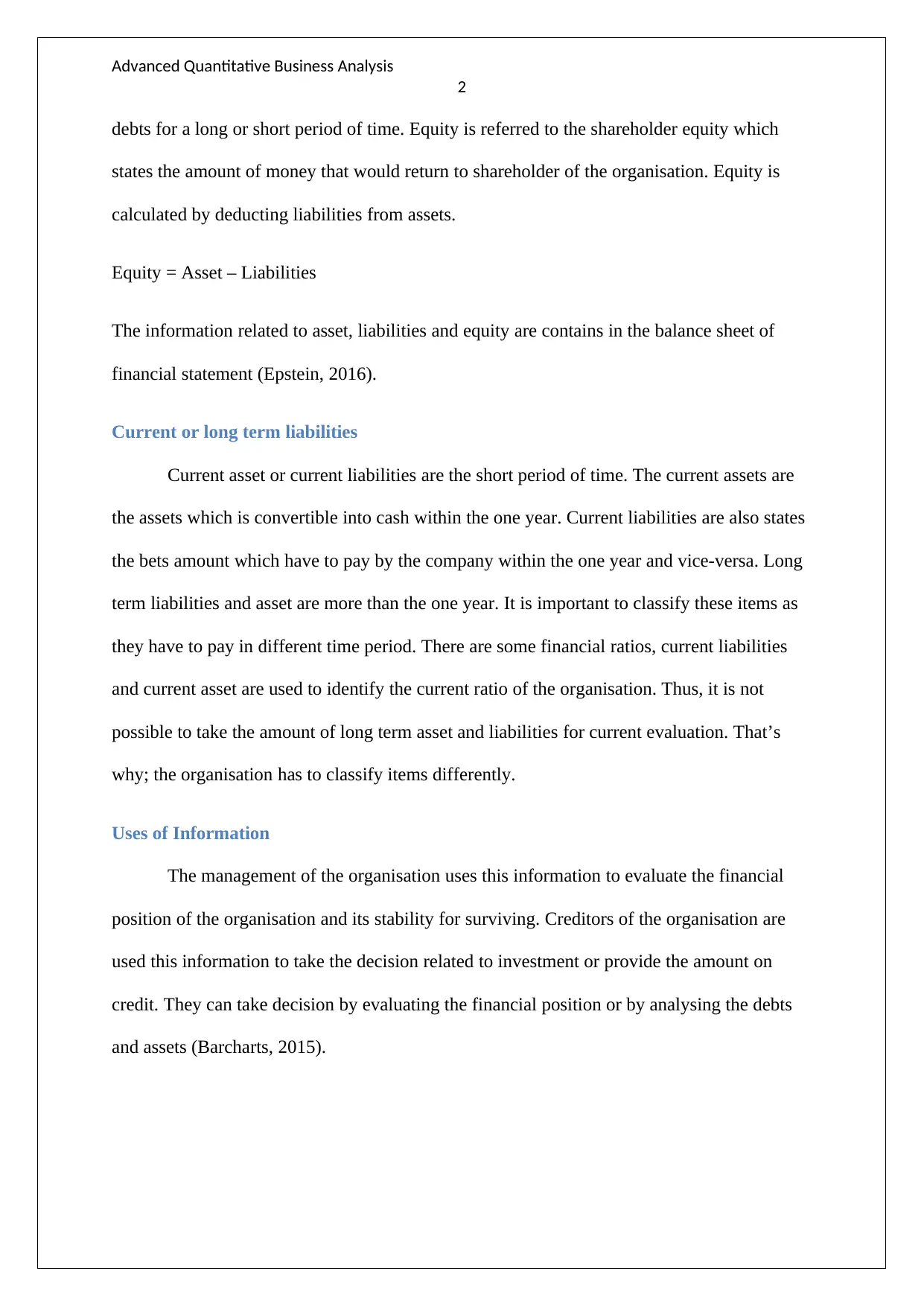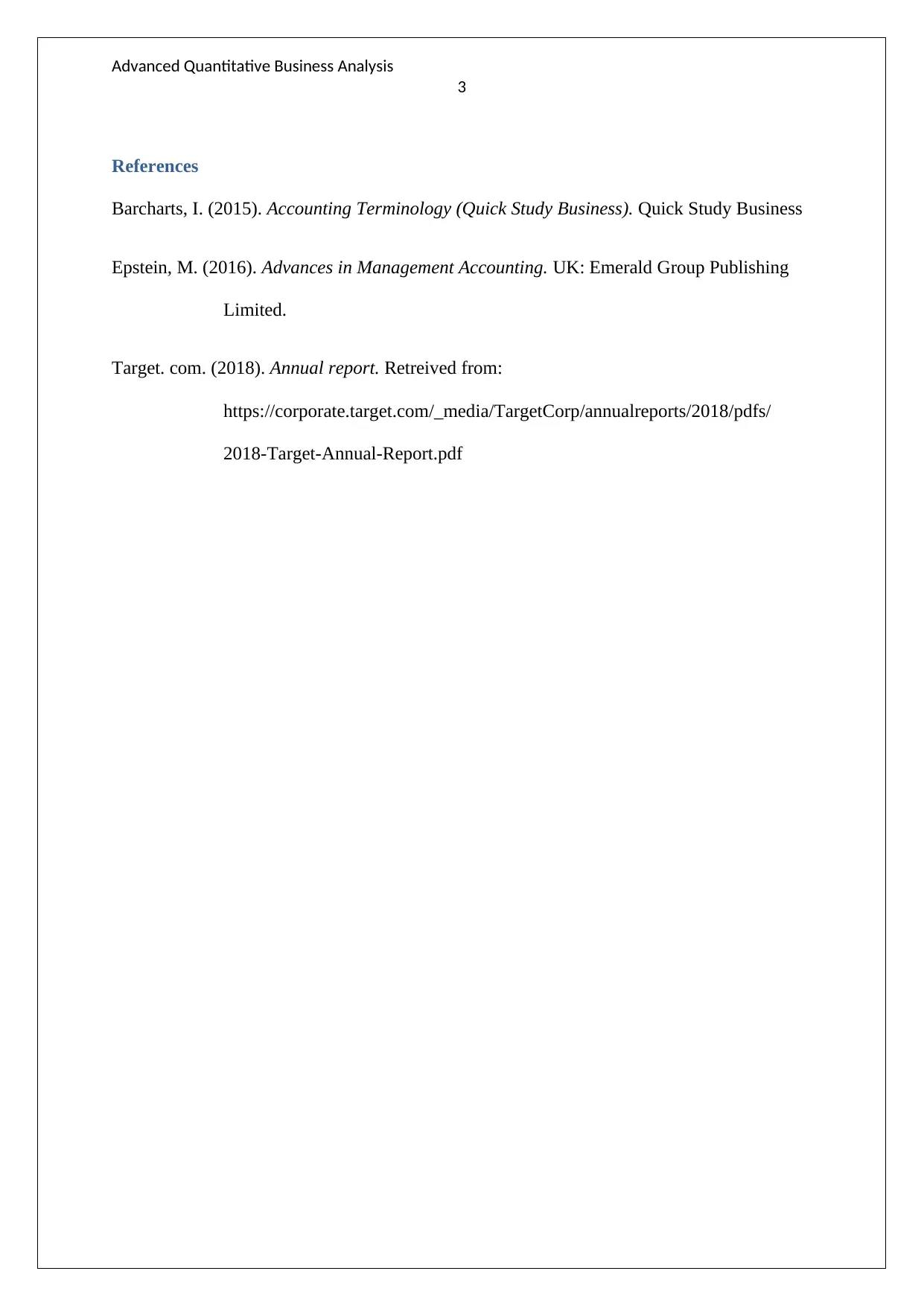Advanced Quantitative Business Analysis: Target.com Annual Report
VerifiedAdded on 2023/03/17
|4
|667
|36
Report
AI Summary
This report provides an analysis of Target.com's 2018 annual report, focusing on the financial statements and key metrics. The report is divided into two parts, the first part presents the company's description, financial summary including income statement, balance sheet, and cash flow statement. The balance sheet includes assets and liabilities. The second part of the report discusses the assets, liabilities, and equity. The report explains the distinction between current and long-term assets and liabilities, and their importance in financial analysis. It also highlights the uses of this financial information by the management and creditors for decision-making purposes. The report concludes by referencing the sources used for the analysis.
1 out of 4











![[object Object]](/_next/static/media/star-bottom.7253800d.svg)